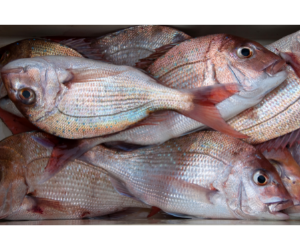Have your say about proposed sustainability measures for fish stocks
Just sharing links to the consultation documents below, please have your say. Consultations close on Feb 8th so not much time Arohamai.
Consultation documents
Review of sustainability measures for scallop (SCA 1 and SCA CS) for 2022 [PDF, 2.9 MB]
Review of sustainability measures for rock lobster (CRA 1,7 and 8) for 2022 [PDF, 1.9 MB]
Review of sustainability measures for hapuku/bass (HPB 7 and 8) for 2022 [PDF, 1.3 MB]
Review of sustainability measures for redbait (RBT 7) for 2022 [PDF, 581 KB]
Review of sustainability measures for southern blue whiting (SBW 6B) for 2022 [PDF, 752 KB]
If you require hard copies of documents or any other information, email FMSubmissions@mpi.govt.nz
Summary table of the proposals
Stocks proposed to have their catch limits, allowances, and deemed values reviewed as part of the 1 April 2022 sustainability round.
| Stock | Proposal | Rationale for review |
| Rock lobster – CRA 7 and 8Otago and Southland | ↑ | Rock lobster is a highly valued shared stock, and one of the most valuable wild-caught inshore fisheries, earning ~$200M in exports annually.Recent stock assessment results suggest that the stocks are above the BMSY reference level, is predicted to increase under current catches, and could sustain up to a 15% increase to the TAC. An increase to the TACC is proposed to allow fishers to realise this utilisation opportunity. |
| Rock lobster – CRA 1Northland and Wellington/Hawke’s Bay | ↓ | A rapid assessment update for CRA 1 suggest that this stock will stay just above its BMSY reference level with current catches. A small decrease to the TAC is proposed to increase the certainty that this stock continues to increase in biomass above the reference level. |
| Scallops – SCA 1 and SCA CSNorthland, Auckland and Coromandel | ↓ | Surveys carried out in 2021 show an overall decline in the biomass and abundance in both SCA 1 and SCA CS from historical levels, with substantive declines in many core scallop beds since the previous survey. Fisheries New Zealand considers that the current biomass and abundance of scallops in SCA 1 and SCA CS are at levels that do not support sustainable fishing at the current catch limits and allowances. Management options are proposed to help rebuild the fishery. |
| Hāpuku/Bass – HPB 7 and HPB 8West Coast South Island and Taranaki | ↓ | HPB 7 and 8 consists of 2 groper species (both with an October fishing year) – hapuku and bass. HPB 7 and 8 have not been reviewed since it was introduced into the QMS in 1986. Commercial catch of both stocks has been trending downwards since 2015/16 and is now substantially lower than the TACC (<50% of the TACC). HPB 7 and 8 are a low information stock with no accepted index of abundance. Reviewing the stocks would allow TACs and allowances to be set, and give due consideration to whether current catches are sustainable. This follows a similar review for other North Island HPB stocks (HPB 1 and 2) in the October Round. |
| Redbait – RBT 7West coasts of the South and North islands | ↓ | RBT 7 is a low knowledge commercial species that occurs throughout the New Zealand Exclusive Economic Zone (EEZ). Redbait in RBT 7 is predominantly caught as a bycatch species of the Jack mackerel trawl fishery on the West Coast South Island. Annual catch landings of redbait have decreased from 1,700 tonnes in 2007 to less than 30 tonnes in recent years. This substantive decrease has not been attributed to a similar degree of reduction in Jack mackerel targeted fishing effort. The TACC is currently set at 2,841 tonnes and has remained unchanged since 2009. |
| Southern blue whiting – SBW 6BBounty Island | ↓ | The agreed management approach for SBW 6B involves recommending catch limits based on the application of a harvest control (or decision) rule to the results from an annual abundance survey for the stock. This approach was introduced in 2017 but due to logistical issues (bad weather, timing, and inability to locate a stable spawning aggregation), this survey has not produced a biomass estimate for the last 4 years. Fisheries New Zealand is proposing a precautionary decrease to the commercial catch limits of this stock.Despite this, preliminary fish length data from samples taken in the recent fishing season indicates recruitment into the fishery. However, until this data is analysed, the strength of this new year class is unknown. As such, Fisheries New Zealand is proposing a precautionary decrease to the commercial catch limits of this stock. |
Making your submission
You must send us your submission before 5pm on Tuesday, 8 February 2022.
We encourage you to use the submission template to help you give feedback.
Submission form – template [DOCX, 75 KB]
Email your completed submission to FMSubmissions@mpi.govt.nz
While we prefer email, you can also post your submission to:
2021 Sustainability Review
Fisheries Management
Fisheries New Zealand
PO Box 2526
Wellington 6140
New Zealand.
What to include
Make sure you tell us in your submission:
- the title of the consultation document
- your name and title
- your organisation’s name (if you are submitting on behalf of an organisation, and whether your submission represents the whole organisation or a section of it)
- your contact details (such as phone number, address, and email).
https://www.mpi.govt.nz/consultations/review-of-sustainability-measures-2022-april-round



